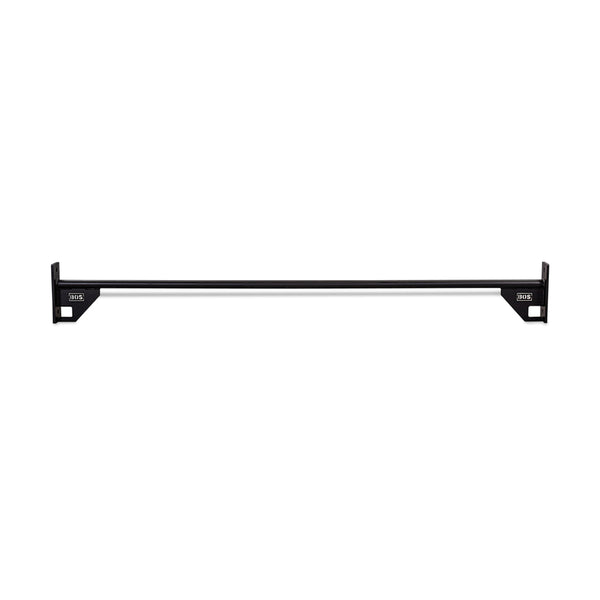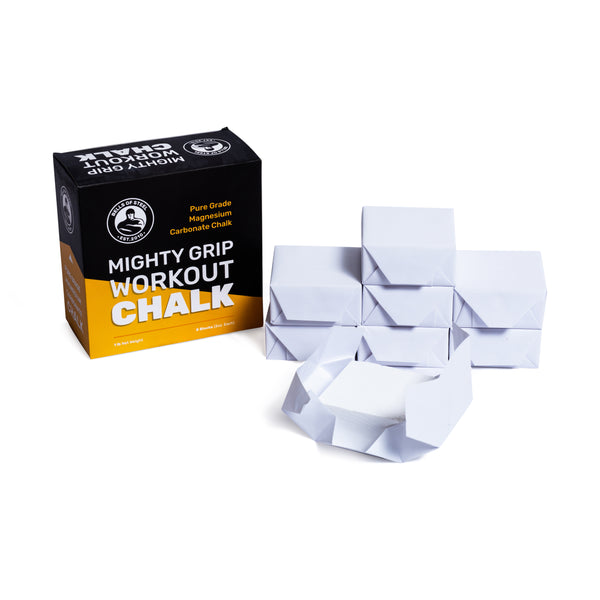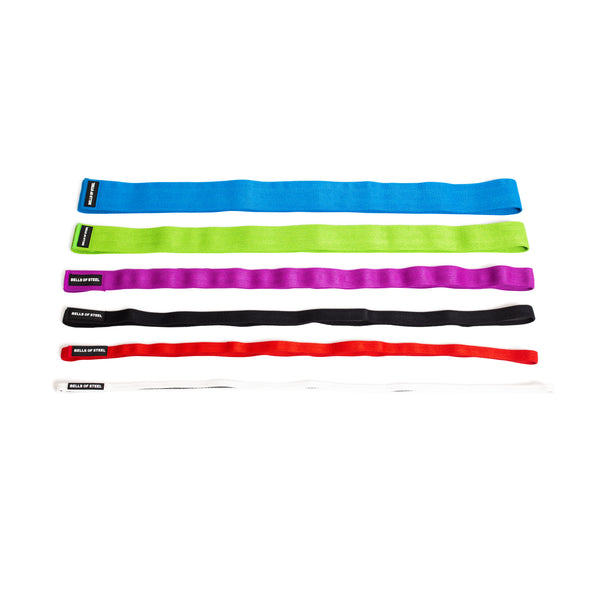- Pull-up ladder from 1 rep to 10
- 2 rep burpee chaser between sets
A traditional “ladder” is a series of sets where the weight stays the same but the reps increase. So, your bodyweight would stay the same for the pull-ups as the reps increase set-by-set. A “chaser” is an exercise that is done after one or more exercises.
In this case, two burpees are done after every set of pull-ups but the burpee reps do not change from set to set. So for this workout, you’d perform one pull-up, then two burpees. Next, two pull-ups followed by two burpees. Then three pull-ups and two burpees, and so forth — all the way to 10 pull-up reps.
This pull-up workout requires a pull-up bar, some floor space, chalk and resistance bands (both are optional). It’s pretty barebones as far as equipment goes, but don’t let its simplicity fool you. For starters, make sure that your pull-up bar station is sturdy. It shouldn’t shake excessively if you jump up to grab the bar, and it definitely should be solid when doing regular pull-ups. The floor space directly in front of your pull-up station should work fine for the burpees. Heads up though — you might need some resistance bands for this workout.
Unless you can do a single set of 10 pull-ups with ease, you’ll likely struggle towards the end of this pull-up workout. To get the assistance of a resistance band, simply throw one end of it over the bar and pull the band through itself. Snug it up close to the pull-up bar, so that it’s tight.
From there, tuck your knee into the free hanging end for minor help with your pull-ups. Or, step down on the free hanging end with your foot and keep your leg straight for major help during your reps.
Lastly, feel free to chalk up before and between your sets since your grip will be taxed during this pull-up workout. Important: minimizing the risk of your hands slipping off the bar shouldn’t be overlooked. If your hands tend to get even a little sweaty when you workout, chalk up! The main muscles you’ll work from this pull-up workout are:
- Lats (back)
- Biceps
- Pecs (chest)
- Front delts (front shoulders)
- Triceps
Being a full body exercise, there’s no doubt that the burpee works a large variety of muscles at the same time. This includes your upper body, lower body, and core. That said, your lats and biceps are going to be worked the most. Your lats end up taking the brunt of the work to pull you up to the bar with your biceps lending a little help along the way.
Additionally, your pecs, shoulders and triceps do a larger amount of work compared to your legs and core since they’re needed to perform the push-up. Because of this, you’ll find that these muscle groups will get the most tired from the burpee. Before starting this pull-up workout, here are some pro tips to help you perform your best.
Try to avoid changing your grip as your workout progresses. Not only will this change which muscles are targeted, but it will also make it harder for you to estimate your pull-up 1-rep max and maximum repetitions because your technique is no longer the same.
Instead, choose your most comfortable grip width and stick with it for the entire workout. Chances are high that you’ll be strongest with that grip anyways. Kipping is when you swing your body in a specific way to create momentum, making it easier to get your chin above the bar. Assuming that you have a decent skill level, kipping pull-ups will be easier to do than strict pull-ups.
Unless you’re competing in a sport that requires you to do kipping pull-ups, then you should avoid doing so in your pull-up workout. This way, you’ll keep the work on the intended muscles and encourage them to grow bigger and stronger. This pull-up workout will build mental toughness. Similar to other ascending ladder-style workouts, the workload increases during the workout since the pull-up reps continue going up after each set.
When you start to struggle on the pull-ups, knowing that the next set will be even more difficult can be a tough pill to swallow. That said, finishing the workout is the top priority — remember to use a resistance band if you need some assistance and grind through it!
Soldiers are known to be strong relative to their bodyweight, with many being extremely skilled in pull-up and push-up variations. That said, you don’t have to be a soldier to try out this short and sweet pull-up workout. Give it a try!



